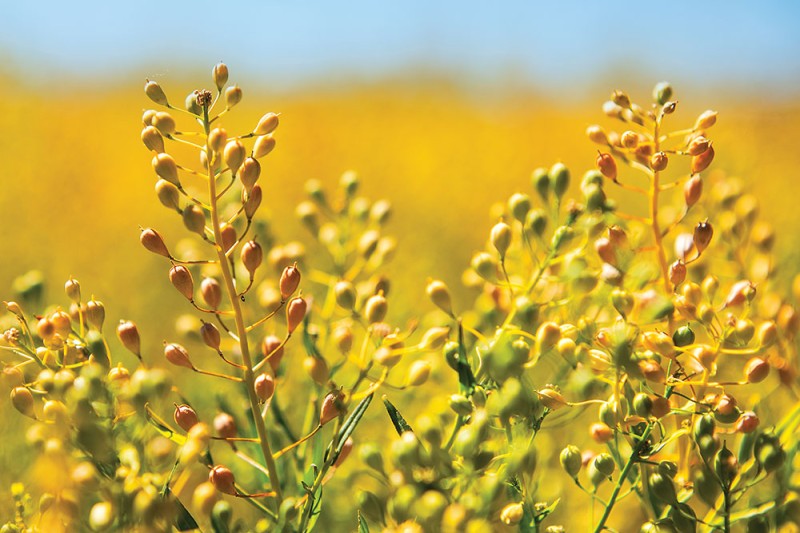
Value Chain Collaboration Enables new Solution among the lowest carbon intensity renewable fuels in the marketplace.
The world’s agri-food leaders are aligned — this is an industry with immense potential to drive positive influence on worldwide climate resilience.
For many organizations, the first steps — prioritizing the importance of climate resilience and deciding what commitments to pursue — are complete or in-progress.
This is a milestone to celebrate. The momentum that the agribusiness community is already giving to climate resilience is a critical foundation.
Now, the task at hand centers on turning commitments into action in scalable, attainable and sustainable ways.
It’s an exciting challenge to take on, but a complex one nonetheless. Driving impact against climate commitments takes collaboration across the entire agribusiness supply chain.
Take decarbonization, for example — specifically, reducing reliance on fossil fuels. Traditional diesel fuel consumption can only be balanced out without disruption if viable, cost effective alternatives are amply available.
The catch is, under current models, the primary inputs at the foundations to the world’s alternative fuels simply are not available at the volumes and cost effectiveness necessary to meaningfully scale alternative fuel adoption — yet.
Meet camelina, an oilseed crop harvested today primarily across Europe and North America. Although not widely known, camelina is a crop with immense potential as a feedstock for sustainable biofuel.
What makes camelina so promising is its ease of adoption for growers. A cover crop, camelina can turn idle fields into production centers during a farmer’s typical offseason, allowing them to adopt the crop without disrupting their primary source of income.
What’s more, camelina is a hearty crop and can be grown across a variety of climates. Worldwide, millions camelina opportunity acres exist.
When harvested effectively, camelina can produce more than 80 gallons of biofuel per acre. Globally, that means camelina has the potential to deliver over 8 billion gallons of sustainable biofuel annually. Volume of this size has the potential to bring renewable biofuels truly within reach as a viable alternative to traditional diesel fuels.
The key to ensuring that camelina is able to reach its full potential as a major global biofuel feedstock, though, lies in ensuring its growth is optimized to achieve maximum yields.
This is where technologies like Earth Observation are opening new doors. A form of remote sensing, Earth Observation provides scientific analysis on the planet’s surface and atmosphere using specialized geospatial satellites.
Through Earth Observation, camelina production can be optimized in the same way this technology optimizes yields for other crops — by monitoring field health, tracking the impacts of environmental conditions, providing proactive insights and more.
For growers on the fence about camelina adoption, Earth Observation offers a valuable safety net by helping reduce the unknowns that come with adopting a new crop. The technology also increases the appeal of camelina adoption by supporting a strong, financially rewarding harvest for growers.
One worldwide leader in alternative fuels production, Global Clean Energy through its Sustainable Oils subsidiary, is well on its way to advancing camelina’s potential to grow sustainable biofuel availability and adoption.
The company works with Earth Observation leader EarthDaily Analytics, through its EarthDaily Agro division, to provide near real-time insights on camelina crop health and conditions and most importantly measuring the impact of carbon sequestered by planting camelina as a cover crop replacing fallowed fields.
The goal of the partnership? Secure industry confidence in camelina as a biofuel feedstock by demonstrating proof of its effectiveness and ultimately spur greater adoption worldwide.
The project has even earned the attention of the USDA. Sustainable Oils and EarthDaily earned $30 million in funding from the agency through a Climate-Smart Commodities Grant.
While still in its early stages, the multi-year initiative will serve as a valuable benchmark. Camelina has not historically been a widely cultivated crop, so EarthDaily’s findings following the pilot will mark the industry’s first full-cycle economic viability and product yield data on the crop. These insights will then serve as the basis for mainstream camelina cultivation for the purpose of renewable biofuel production.
When it comes to delivering on macro-level climates commitments like decarbonization, a simple cover crop like camelina isn’t likely the first solution that comes to mind. It’s for this very reason, though, that this unassuming plant is a powerful symbol of collaboration.
The agribusiness industry is well positioned to lead the way in taking on some of the planet’s most complex challenges. But doing so is only possible when organizations are united up and down the entire value chain. The potential exists to make sustainable fuels a realistic alternative for more organizations, and it may just take root in uniting around a solution in the dirt.
Don’t miss the break out session from the USDA, Global Clean Energy/ Sustainable Oils, and EarthDaily on Tuesday March 19th.
4.25 – 5.05pm
Location: Willow

Sustainable Ag & Energy: Leading GHG Mitigation, Biofuels and Carbon Sequestration
In this session, Explore innovative strategies in agriculture and energy for greenhouse gas reduction. Learn about USDA’s plans to partner with Sustainable Oils to sequester millions of metric tons of CO2 and pinpoint the impact of biofuels, the development of climate-smart commodities, and the latest innovations from EarthDaily Agro to measure impact.
